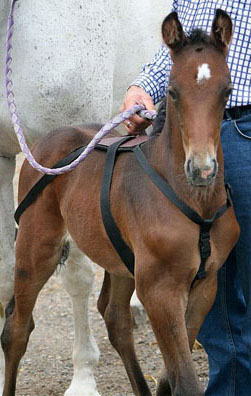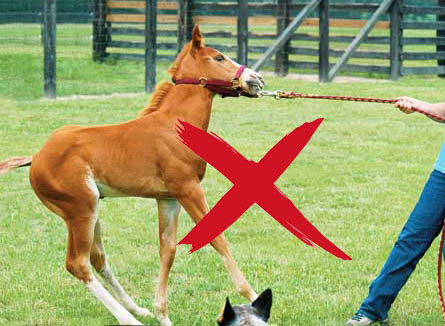Teeth
It’s important to have an equine dentist regularly check your horse’s teeth. A good dentist can also give advice on correct fitting of the bit. When your horse does not have proper mastication patterns (chewing) it’s an indication that he could have Temporal Mandibular Dysfunction (TMD). Tension in the Temporal Mandibular Joint (TMJ) will reflect on the rest of the body. As previously described, the whole body is connected. Your equine needs balanced teeth to be a good athlete.
It’s important to have an equine dentist regularly check your horse’s teeth. A good dentist can also give advice on correct fitting of the bit. When your horse does not have proper mastication patterns (chewing) it’s an indication that he could have Temporal Mandibular Dysfunction (TMD). Tension in the Temporal Mandibular Joint (TMJ) will reflect on the rest of the body. As previously described, the whole body is connected. Your equine needs balanced teeth to be a good athlete.
Foals
By the age of one a number of major bones in the skull fuse. So before a horse is fully-grown you need to be careful when using a halter. It’s not a good idea to leave a foal with a halter on unattended, certainly not in the field. Other horses can pull on it; more dangerous is the fact that the halter could get hooked to a fence. When the foal is six months old it is safe to start working with light pressure. Teach a foal to move and stop by applying pressure to the front and hind end of the body. This can be easily done with a rope in an 8 shape. There are even special harnesses that you can buy for this purpose.
Halter / Bridle
Choose a well fitting halter for your horse. It is advisable to choose a halter with a soft and broad nose and head strap. Teach your horse gradually to stand tied and always use a panic hook. Many accidents happen because horses pull back. The same applies to a bridle, make sure it’s not too tight and carefully choose an appropriate bit. Pressure to the skull will influence the rest of the body, so keep that in mind. Note: Never tie your horse up by the bridle. Today there are many bitless alternatives; I am a fan of the Dr. Cook Bitless Bridle.
Choose a well fitting halter for your horse. It is advisable to choose a halter with a soft and broad nose and head strap. Teach your horse gradually to stand tied and always use a panic hook. Many accidents happen because horses pull back. The same applies to a bridle, make sure it’s not too tight and carefully choose an appropriate bit. Pressure to the skull will influence the rest of the body, so keep that in mind. Note: Never tie your horse up by the bridle. Today there are many bitless alternatives; I am a fan of the Dr. Cook Bitless Bridle.
Choose a well-fitting saddle. Ask a qualified saddle fitter for advice. Correct saddle fitting is an art in itself!




